3 Things the Social Justice Sector Can Do to Make History


The 2016 Net Impact conference convened in Philadelphia last week with a bold call-to-action: Make history. And at a time when global challenges like climate change, resource scarcity and social inequity make our future uncertain, the demand for leaders with the courage to make history has never been greater.
When it comes to social justice, consider a few statistics raised by Michael Smith of My Brother’s Keeper:
- Black, American Indian and Hispanic children are between six and nine times more likely than white children to live in areas of concentrated poverty.
- 80 percent of children of color are not reading at grade level.
- Black boys make up 6 percent of the American population, but are nearly half of the nation's murder victims.
- A black baby boy born 25 years ago has only a 1 in 2 chance of being employed today, due not only to socioeconomic factors, but also to early death and over-incarceration.
- Nearly half of black men are arrested at least once for non-traffic-related crimes by age 23.
Those stats are pretty grim, but this one isn't: If we closed the gap in labor force participation between 16-to-54 year-old men of color compared to white men, total U.S. GDP would increase by 2 percent.
That finding came from research at Smith's own My Brother's Keeper, President Barack Obama's initiative to address persistent opportunity gaps faced by boys and young men of color. President Obama formed the initiative in the wake of the verdict in the Trayvon Martin case, when he famously said: "Thirty years ago, Trayvon Martin could have been me."
Smith elaborated on Obama's motivations behind the program: "When you hear the president talk about this, he will say we have a moral obligation to make sure that America remains a place where you can make it if you try. But he would also say we have an economic imperative because America cannot remain globally competitive when we are satisfied with writing off so many young men who are sitting on the sidelines."
Smith, who lost his younger brother to gun violence, serves as special assistant to the president and senior director of cabinet affairs for My Brother's Keeper. He said his and his brother's story proves America has a long way to go before we can close the opportunity gap for children of color. But he insisted today's somewhat contentious landscape provides an open avenue for social change-makers.
As he wrapped up the Net Impact conference on Saturday, he shared three things the social justice sector can do to make history.
1. Be fearless
While Smith was a senior vice president for the Case Foundation, his team put out a campaign called Be Fearless. Smith said the family foundation intended to spark a conversation about how to take more risk and be be bold in the social sector. "Because if we can’t, then who will?," he asked rhetorically. "Why is it okay for an athlete, an entertainer, an entrepreneur to be fearless, and we’re incremental and slow?"
The Case Foundation commissioned research on the common attributes in fearless change-makers. Two in particular stood out to Smith:
- They make big bets: "People don’t want to follow the incremental," Smith said. "They don’t want 500 different things. They want a big call to action like: ‘We’re going to end malaria. We’re going to have a play place in walking distance to every kid. We’re going to make sure every young man of color in these 10 communities has a job.' Make a big bet for your work."
- They constantly experiment: "They figure out how to do R&D even when they don’t have R&D money. They make failure matter. They don’t get lost and sad about failures. They learn from them, and they build on top of them," Smith said. "Don't get stuck."
2. Be collaborative
"If you want to make changes, it’s no longer just the private sector, the social sector, philanthropy or corporations," Smith said. "It’s all happening together"
In 2007, the State Department launched the U.S.-Palestinian Partnership to create educational and economic opportunities for Palestinian youth. The Case Foundation was one of many partners on board. And Smith said the initiative proves what's possible with collaboration.
"We worked with the Bush administration; we worked with the Palestinian government," he said. "Because if you want to partner in peace, you have to make sure people have open opportunity."
The partnership included a venture capital fund, youth development centers powered by Boys and Girls Clubs of America, and developer days with Google staff. "You’ve got to figure out how to play to the strengths of each of the sectors coming together if you want breakthrough innovations," Smith advised. "If you want to go far, go together."
3. Bet on the winners
"We spend $300 billion a year in America on nonprofits, where 80 percent of them don’t do any sort of research. More than 50 percent don’t have a theory of change or logic model," Smith explained. "So, the pie is not getting bigger. Since the recession, the revenue that’s going to nonprofits is flat or a little above at best."
So, what's the solution? "One, we have to bet on the winners. And two, we have to come up with some creative strategies for social financing."
Bet on the winners sounds a bit like a line from "The Wolf of Wall Street," so how does it apply to the social sector? How can donors and partners pick winners and losers when it comes to nonprofits? Smith said the first step is a major overhaul in the way nonprofits measure success.
"Make sure we’re judging outcomes, not outputs," he advised. "Don’t ask me how many kids went through the program. Tell me how many kids went to college, stayed in college, went on and got a job."
Smith pointed to Pay for Success, which launched under his direction at the the Social Innovation Fund. The initiative provided a new contracting and financing model that leverages philanthropic and private dollars to fund services up front, the result of multiple feasibility studies and research projects. In the model, the government, or another entity, pays after the services generate results.
It sounds simple, but it's something of a breakthrough. And the strategy gained strong bipartisan support for increasing return on taxpayer dollars while improving the quality of services.
"We get really okay in the nonprofit sector patting ourselves on the back with one good story," Smith said. "But if we’re going to have breakthroughs, we’re going to have to focus on outcomes and we’re going to have to bring new dollars in the space."
The bottom line
In closing, Smith pointed to a famous Greek proverb: "A society grows great when old men plant trees in whose shade they know they shall never sit."
It seemed fitting for a crowd of mostly post-graduate students. And it resonates all the more as we reach a turning point in the fight for social justice and equity in America. Smith shared a particularly evocative story of what the quote means to him:
"I was sitting at the opening of the African American History Museum a few weeks ago. I looked at John Lewis, and I looked at the great civil rights leaders. It made me think that so many of us are sitting under the shade and benefiting from the fruit of the trees they planted a generation ago. We’re sitting there, and we’ve got no shovel. We are not planning to plant the trees for the next generation."
He challenged the crowd of self-proclaimed change-makers to think about how they could pick up the shovel. It's not unlike John F. Kennedy's remarks in his 1961 inaugural address, "Ask not what your country can do for you — ask what you can do for your country."
So, how will you raise your shovel? What will you do for our country, for society and for the planet? As students, business professionals and nonprofit leaders, it's up to each of us to decide. But the fact that we're raising the question should give us hope for the future.
"That’s what this is all about," Smith said. "We’re going to act with urgency. And we’ve got to realize that we need to get some shovels ready."
Image credit: Official White House Photo by Pete Souza, courtesy of My Brother's Keeper
Setting Science-Based Targets for Short-Lived Climate Pollutants
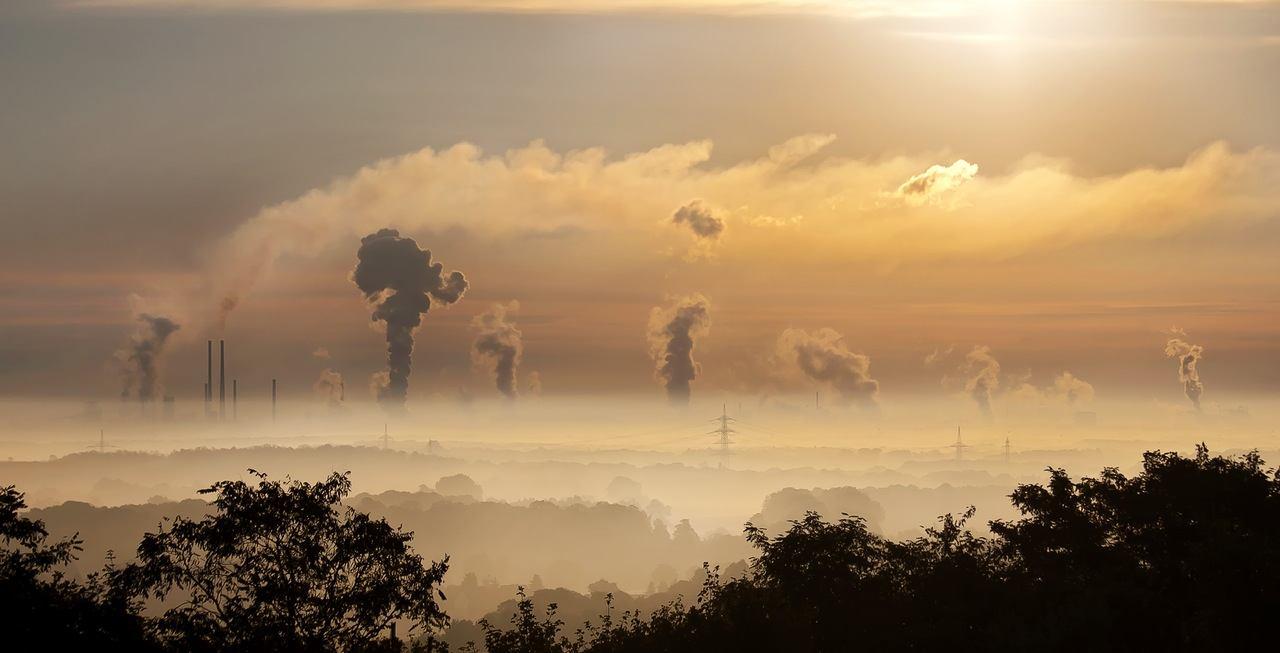

Editor’s note: This is the third post in a three-part series on science-based corporate climate targets. In case you missed it, you can read the first part here and the second part here.
By Tobias Schultz
As I discussed in my two previous blog postings, the need clearly exists for science-based corporate emissions-reduction targets. These measurable and verifiable efforts can help to place the world on a path toward achieving the ambitious carbon-reduction goals set by the Paris climate agreement in 2015.
The United Nations Environment Program (UNEP) identified the reduction of short-lived climate pollutants (SLCPs) as a key factor in developing science-based mitigation policies consistent with the goal to limit global temperature rise to 2 degrees Celsius. SLCPs, which include black carbon, ozone, methane and hydrofluorocarbons, have relatively short lifetimes in the atmosphere. This means that reducing these emissions can provide the immediate benefit of slowing global warming. For this reason, UNEP determined that SLCP abatement, in concert with carbon mitigation, will be necessary to achieve the 2-degree goal.
Black carbon and ozone also directly affect our health and well-being – which means these reductions can have a dramatic and positive impact on human health.
What are some major sources of SLCPs? Agricultural sectors including rice growing and cattle husbandry produce a significant amount of methane emissions, as does oil and gas extraction. Most black carbon emissions today originate in developing countries, primarily from residential uses such as coal- and wood-burning cook stoves, as well as transport fuels and miscellaneous industry activities.
What does this mean for your company? First, it’s important to understand how and what your organization may contribute to SLCPs. Clearly if you are an agricultural company, methane will be a major issue; conversely, if you are a global manufacturer with supply chain operations in places like India and China, black carbon emissions will be a principal component of your carbon footprint.
Yet among these challenges are opportunities for innovative thinking. For example, if your company purchases agricultural products (i.e., rice or dairy) with their significant embedded methane, this presents the opportunity to explore creative new approaches to reducing this SLCP while also lowering business expenses. Consider the approach recently adopted by several California dairy farmers who are building biogas digesters. This technology will convert the dairies’ biogas methane emissions into renewable, green energy -- enough to power about 4,800 households.
If you have extensive transportation or operations in China, you can lower your black carbon emissions for pennies on the dollar, as the technologies to reduce this emission are cheap and readily available there. This will also help put you in the good graces of local governments.
For these reasons and more, I advise any company committed to reducing its corporate carbon footprint to augment science-based GHG emissions reductions with SLCP abatement targets. This provides the most credible type of goal, and will place your company in a leadership position among a small group of businesses that have taken measurable steps to reduce their SLCP emissions. Additionally, you can receive official recognition for your efforts from both the Climate and Clean Air Coalition and the We Mean Business coalition.
Image credit: Pexels
Tobias Schultz is Manager of Corporate Sustainability Services for SCS Global Services, where he designs and implements corporate sustainability programs for clients, including the development of quantitative life cycle assessments (LCAs) and the analysis of the environmental performance of global supply chains. SCS is a worldwide leader in independent, third-party environmental certification.
Schultz can be reached at [email protected].
Renewables Tech Poised to Disrupt Fossil Fuels
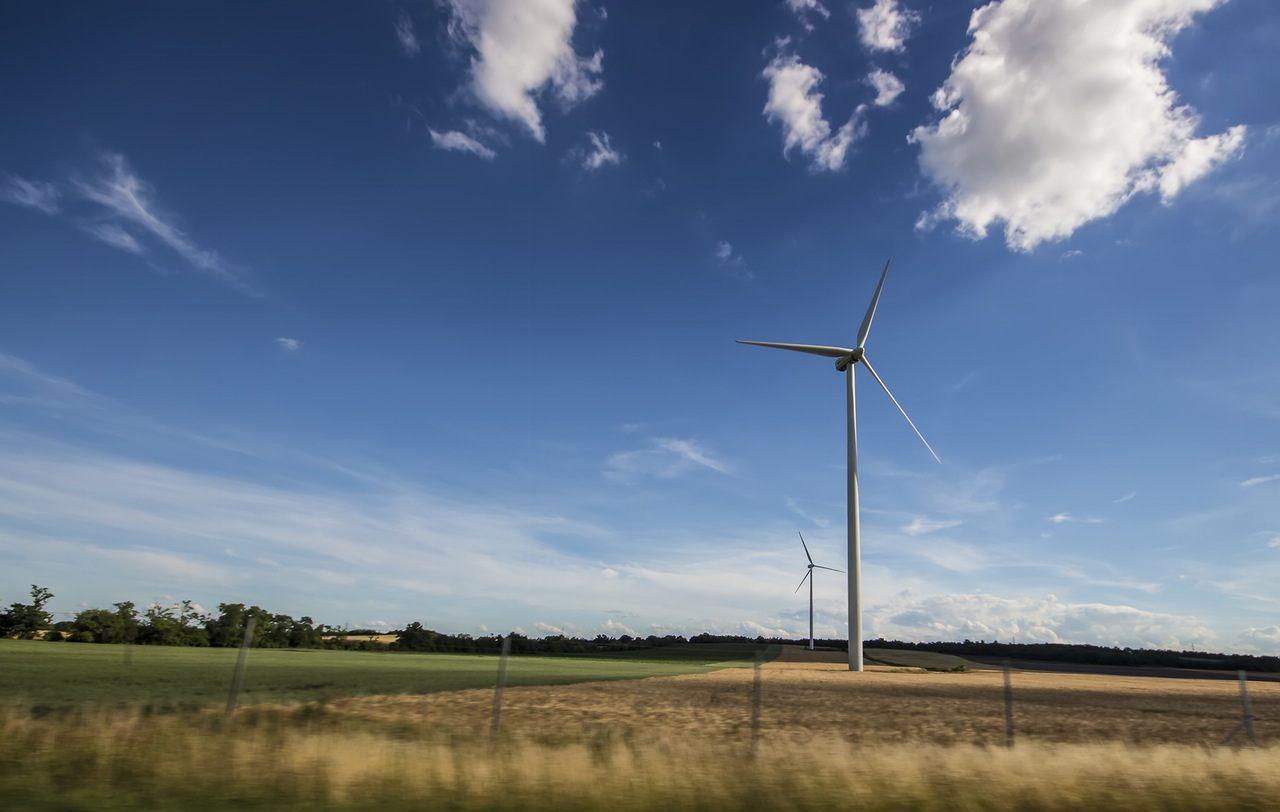

By Leah Y. Parks
Exponential growth clean-energy technologies are a most powerful not-so-secret weapon for our last, best effort in the fight against disastrous climate change. A 21st-century energy transformation is already underway. Our digital revolution is facilitating massive progress in technologies that are leading to disruption and will result in the replacement of the fossil fuel industry faster than most could imagine.
We can jump over political resistance and climate denial despite outdated and misinformed all-of-the above federal policies. Our modern-day Edisons have done their job. We are at a tipping point where technological innovations that have been in development for many years can now provide us with all the energy we need at ever decreasing costs.
As described in Tony Seba’s book, "Clean Disruption," “The key to the disruption of energy lies in the exponential cost and performance improvement of technologies that convert, manage, store, and share clean energy.”
We need only look at the last turn of the century to see how quickly transformation can happen.
In 1903 we took our first flight, and New York city streets were filled with buggies. By 1914 we were fighting a war in the air and the same streets teemed with cars. The engineering which first made spaceflight possible was developed in 1919. Within 38 years Sputnik was launched, and 12 years later we walked on the moon.
A renewable energy infrastructure will replace the fossil fuel infrastructure because it is a better way of supplying energy.
Renewables are a superior product in part because they are technology and not a fuel. The technology will continue to improve, and costs will continue to plummet. Unlike renewables, the prices of fossil fuels fluctuate and are subject to market manipulation and availability.
Once solar and wind is built and paid for, the fuel is free. Renewables, like our hydroelectric dams, will provide dependable and cheap energy for years.
Even without subsidies, as shown in Lazard’s 2015 Levelized Cost of Energy Analysis, utility-scale solar and wind prices are dropping below new natural gas costs of around 6 cents per kilowatt-hour. Solar projects are bidding as low as 3.8 cents per kWh in places like California and Nevada and as low as 3 cents per kWh, completely unsubsidized, in Chile and Dubai. Rooftop solar PV plus energy storage systems are also price competitive in some markets, and wind is bidding as low as 2 cents per kWh.
These price drops are resulting in increased deployment. In the year 2014 around 47% percent of utility-scale electricity capacity installed in the United States was solar and wind energy, with the remainder being natural gas. In 2015, around 62 percent of new utility-scale electricity capacity was solar and wind energy, and 34 percent was natural gas. Worldwide we are seeing greater deployment in tandem with falling costs.
The most noticeable first example of a fossil fuel disruption is the coal Industry. Bankruptcy filings by coal producers are becoming ever more common. A recent study by the Institute for Energy Economics and Financial Analysis (IEEFA) found that price drops and increased capacity of solar and wind are major factors putting coal plants under financial stress in Texas.
Many project that oil is next. Electric vehicles are poised to disrupt internal combustion engine cars. Lithium-ion batteries have come down as far as $145/kWh. The bank UBS considers this price point to be a paradigm shift and lower than needed for cost parity. Affordable 200-plus mile range cars are now a reality. General Motors and Tesla are now taking orders for the Chevy Bolt and Tesla Model 3.
A transformation to a renewable energy future is certain.
We once used oil from whale blubber to heat our homes, horses for transport, and film cameras to capture our special moments. We can expect internal combustion engine cars, natural gas boilers, and fossil fuel electricity generation to follow in the same path. However, we are running out of time to prevent dangerous climate change.
This is no time for complacency. Time is of the essence. In order to keep the Earth’s temperature rise below 2 degrees Celsius, we must achieve zero greenhouse gas emissions by the year 2050 — this gives us about 35 years. The best course of action is a doable transition of reducing fossil fuels emissions by an average 3 percent transition per year.
The fossil fuel industry will not go in the direction of the buggy whip without a fight. Clean technology has become a political issue. Acknowledgement of progress and potential for job growth is being lost.
We must continue to step up political pressure. We have already seen the transition beginning at the city-level. The International Energy Agency (IEA), previously forecasting conservative growth, has “significantly” revised its estimates for the deployment of renewables in part due to energy security and world policies such as the Paris agreement.
The exact form our energy infrastructure will take by the year 2050 is not certain, but it will be cleaner, cheaper and safer than the one we inherited from the 20th century. Electric vehicles and trains, as well as heat pumps, will play a major role. Solar, wind and storage, paired with digital management and energy efficiency, are already being deployed.
We are witnessing the end of an energy dinosaur. This is a new era of clean energy, ready to obtain its fuel free of charge from the sun and wind. Anyone looking backward will be left in the digital dust. They will be made extinct by the unrelenting disruptive force of exponential growth technologies.
Working against entrenched interests can be frustrating and at times make optimism difficult. In moments of doubt, let's not forget the words of Robert Hutchings Goddard, the father of space flight, “The dream of yesterday is the hope of today and the reality of tomorrow.”
Image credit: Pexels
Leah Y Parks is currently an associate editor for ElectricityPolicy.com and Electricity Daily and is co-author of the book, "All-Electric America: A Climate Solution and the Hopeful Future." She has acted as an advisor for technology reports and has written extensively about innovations in energy storage, smart grid technology, energy infrastructure, and renewable energy. Ms. Parks holds a Masters of Science degree from Stanford University in Civil and Environmental Engineering and a BA from the University of Wisconsin in International Relations.
REI #OptOutside Campaign Presents Alternative to Black Friday Shopping


By David Evans
I’m pretty sure the holidays were meant to be a time for us to give thanks and spend time with our families, but I’m not convinced. Lately it seems like Christmas is an excuse to shop and Thanksgiving is a pregame meal for Black Friday. School’s out and work is closed, but the consumers inside us just can’t seem to relax and enjoy it.
Every year on Black Friday, millions of shoppers wait in line for hours, rush through the doors, and claw at each other to get the best deal. Last year over 74 million shoppers battled the crowds on Black Friday, and 35 million shopped on Thanksgiving Day. Have we really placed getting a good deal on a TV or nabbing the next hot gadget higher than spending time with our families?
Thankfully, one company is making an effort to bring us back down to earth. REI mustered the guts to forego the massive profits driven by Black Friday in exchange for increased loyalty from its members and some much-deserved respect from the humans inside us.
I must admit, as a lifelong an outdoor enthusiast who has boycotted Christmas since 12 years old, REI’s stand against Black Friday really resonates with me. Apart from being agnostic and knowing Santa wasn’t real from a young age, I could never wrap my head around the gift-giving aspect of the holidays. There is so much social pressure to get the right gift and make sure not to forget anyone that we lose sight of why we’re together in the first place.
Not to mention, acting excited about a gift you don’t like is really awkward…
As my siblings and I grew older, it’s been easier to tone down the consumer side of the holidays. Last year was a big step for us (and my favorite Christmas ever). We instituted a Secret Santa rather than the traditional gift exchange which resulted in less shopping, more time with the fam, and less awkward unwrappings.
While we made considerable progress in my household last year, REI went mainstream. Fed up with American consumer culture, REI took the lead to close its doors and encourage us to get outside on Black Friday.
“Last year we started a movement for people to reconnect outdoors over the holidays. We closed on one of the most popular shopping days of the year, paid our 12,000+ employees to spend time outside, and invited America to join us. The response was overwhelmingly positive. More than 1.4 million people and 170 organizations chose to #OptOutside,” REI wrote in a blog post.
Last year, I opted outside and went on a family hike for the first time in almost 10 years! And we were rewarded. On mountain trail in the foothills of the Coachella Valley, we saw three Big Horn Sheep – a rare sight as this local population is working its way back from near extinction.
This year, REI is back at it again, closing its doors on Black Friday and paying its 12,000+ employees to spend time outdoors. More importantly, the company started a movement that’s gaining traction. Last year, 170 organizations joined the movement, and this year the company partnered with giants like Subaru of America, Google, Meetup, Upworthy and Outdoor Research to spread the word.
Black Friday has become extreme enough that even a handful of retailers are protesting against it. It’s time for us to take back the holidays, and it’s never been easier or more fun to protest. This year, I encourage you to get outside in whatever way you enjoy nature, and let the outlets know you chose to #OptOutside.
Image credit: REI
David Evans is the founder of prch, a resource for eco-minded men. He is a minimalist, environmentalist, and conscious consumer with a background in environmental studies, conservation, and tech. Learn to improve your environmental and social impact @theprch.
Policy Efforts to Eradicate Forced Labor: Too Little, Too Late
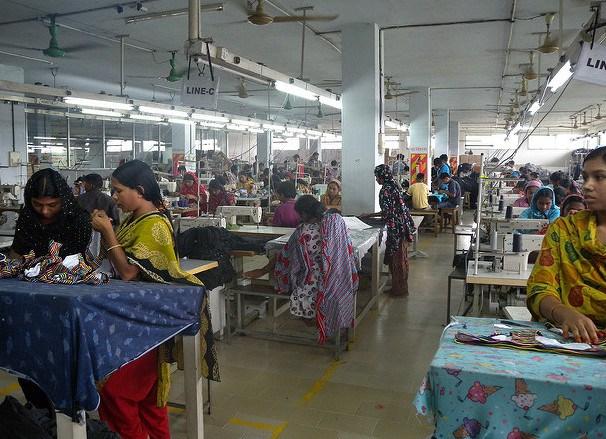

Nearly 21 million people worldwide are victims of forced labor, trafficking and slavery, according to United Nations International Labor Organization estimates. While several countries and a reported 39 U.S. states have adopted anti-trafficking and forced labor laws, skepticism remains as to whether current government policies are bold enough to fully protect vulnerable people from exploitation.
So, what do governments need to do to aggresively tackle heinous forced labor practices?
Looking back to move forward
First, let’s consider how the last three decades shaped our understanding of the challenges and complexities of forced labor industries and practices. Take for instance the outcry against the fashion industry’s use of sweatshops in the 1990s. Consumers demanded transparency about the origins of goods from the multinational corporations selling them. In turn, corporations and NGOs began taking on the role of citizen leadership to crack down on labor laws and influence tighter regulations in countries with lax policies.
Despite these efforts, complete transparency and accountability of labor practices is still a pipe dream. There are very few countries and industries where the manufacturing and trading of goods and services have not been touched by forced labor workers. From cell phone materials to textiles to food, the trade industry remains fueled by the suppression of human rights.
Enough is not enough
Regulations thus far have been severely inadequate. In 2010, the state of California passed the Transparency in Supply Chains Act. This piece of legislation, which fully rolled out in 2012 and has served as a foundation for labor laws in other states and even the U.K., requires mid-to-large retailers and manufacturing companies to report on their specific actions to eradicate slavery and human trafficking in their supply chains. Companies must report on which factories are used, how the factories are evaluated to ensure safe and fair labor practices, and confirm that they regularly perform audits of said factories.
The act was poised to pinpoint the practices of over 3,000 companies across the state. However, accountability for this required transparency goes unchecked and under-scrutinized — especially for those businesses making under $100 million who do not have to adhere to the legislation’s requirements.
“Although the new provision will push slave labor higher up the agenda for businesses and help increase transparency, there are concerns that it will do little to force companies to properly investigate slavery in their supply chains,” Annie Kelly of the Guardian wrote of the new U.K. policies last year.
A high-profile case brought against Costco Wholesalers by customer Monica Sud revealed that, despite the warehouse giant’s disclosure against human slavery from its suppliers, there were discrepancies with some items. Sud sued Costco, saying a bag of prawns she purchased were made using feed meal produced in Thailand under forced labor conditions. The case was dismissed on a technicality of location of the prawns, but pointed to the larger issue of how lax government regulations can help corporations skirt accountability.
Top-down support
Moves to ensure compliance are underway.
In February, U.S. Congress and President Barack Obama passed a bill preventing U.S. imports of goods made by child or forced labor. The new provisions closed a loophole in the 1930s Tariff Act that allowed for these types of goods, regardless of conditions, under the auspices of meeting consumer demand. The Department of Homeland Security will now lead supply chain monitoring and investigations of firms tied to forced labor across 46 countries.
But the victory is not without its inherent challenges. Ongoing intensive investigation will be difficult, leaving many suppliers to regulate themselves, only called into question when outside parties make allegations about the business’ practices.
Presidential candidate Hillary Clinton said that she is placing the forced labor issue high on her priority list by supporting anti-trafficking laws that include training of law enforcement and transportation security officials “so they can spot signs of trafficking.” She also pushed for federal spending to steer clear of funding forced labor, even calling out recruitment schemes that “make workers vulnerable to exploitation."
Breaking bad to do good
Addressing the forced labor issue with government intervention must push thinking on how to prevent vulnerable populations from being swept into the industries in the first place.
Without economic and structural stability in the form of basic human needs (clean water, education, housing, transportation, health care, jobs, etc), provisions and global efforts to eradicate the construct of forced labor will remain solely targeted toward symptoms of the much more dire need of prevention through better policies that support vulnerable populations.
Encouraging All to Vote, Patagonia Closes Its Doors for Election Day
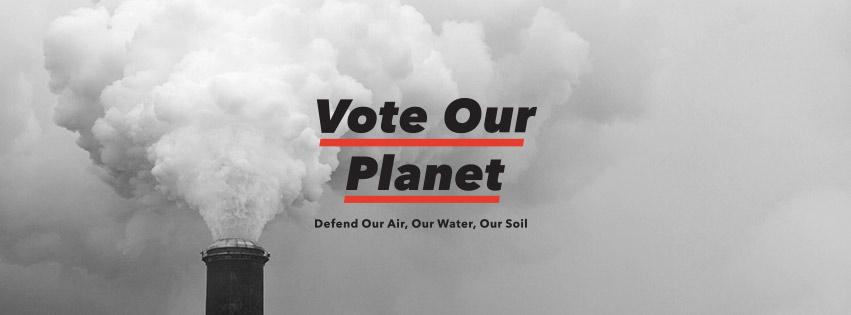

Outdoor clothing and gear company Patagonia will shut down its entire operations for today, Election Day, to encourage employees and the general public to exercise their right to vote. The company’s headquarters in Ventura, California; its customer service and distribution care enter in Reno, Nevada; and all of its retail stores across the U.S. are closed today.
Patagonia’s decision to close down is part of the company’s Vote Our Planet Initiative, which aims to motivate citizens to vote with the environment in mind during federal, state and local elections. The company claims to have spent over $1 million on approximately 60 events across 29 stores this election season. This year, in addition to its hiking pants, parkas and backpacking equipment, customers could also find information on environmental issues and voter registration materials. Patagonia also made its case for more environmental activism through its YouTube channel as well as through a social media campaign, #VoteOurPlanet.
The company has managed non-partisan environmental campaigns during election seasons since 2004. But according to one local California television station, this is the first time Patagonia has given its employees the day off to vote. Workers interviewed for the station’s report indicated they would use their day off to go to the polls.
Patagonia is also aligned with Take Off Election Day, an initiative started by several technology firms that encourages companies to give their employees the day off so they can vote. Major sponsors of this campaign include Spotify, SurveyMonkey, Western Union, Salon and Task Rabbit. As of press time, over 330 companies said they will let workers to skip work today in order to vote.
These companies’ decision is important for several reasons. The U.S. is one of few democracies to hold elections on a workday; most countries conduct voting on weekends, generally on Sunday. A few countries, such as South Korea, have elections during the week, but that day is required by law to be a holiday. Despite the U.S. being an outlier when it comes to voting, do not expect Election Day scheduling to change any time soon, as the Constitution mandates federal elections must be held on the first Tuesday following the first Monday of November.
Furthermore, federal law makes no provisions mandating that employers grant workers time off if they wish to vote. That decision has been left largely to the states, with few requiring businesses to let employees vote without losing pay. The rise of absentee ballots has made it easier to vote in this rigid system, however; California is one of 37 states where citizens can vote by absentee ballot permanently, without documenting any excuse such as a business trip or illness.
But in many southern and northeastern states, including New York, Pennsylvania, Virginia, Mississippi and Alabama, early voting is hardly easy, as an excuse is required to vote absentee. Voting online is on the rise, but that privilege is generally only reserved for military service members and overseas residents. In Colorado, Oregon and Washington, voting is done entirely by mail. Oregon, the first state to launch all-mail voting in 1998, says it has one of the highest voter participation rates in the U.S. because of the ease of this system.
Despite some progress, largely due to technology, the U.S. is actually moving backward when it comes to voting rights. According to the Brennan Center for Justice, 14 states have made it more difficult to vote in recent years, due largely to imposed identification requirements, curtailed early voting and a more restrictive voter registration process. Many of these new voting laws, which led to the Supreme Court overturning much of the Voting Rights Act, stem from a fabricated story that voter fraud is on the rise despite the overwhelming evidence suggesting that such fears are over-hyped. In fact, the highest profile case of “voter fraud” this election season was a Donald Trump supporter voting twice in Iowa.
Trump’s braying that this year is a “rigged election” (unless the polls are wrong and today’s election is in his favor) has fanned the flames of voter intimidation. Hence, the fact that companies including Patagonia are giving their employees a day off to vote is an important move so that America’s democratic ideals still allow everyone to have their voice in today’s election, regardless of ideology, job status, race or voting history.
Image credit: Patagonia/Facebook
It's a Brave New World for Sustainability Professionals
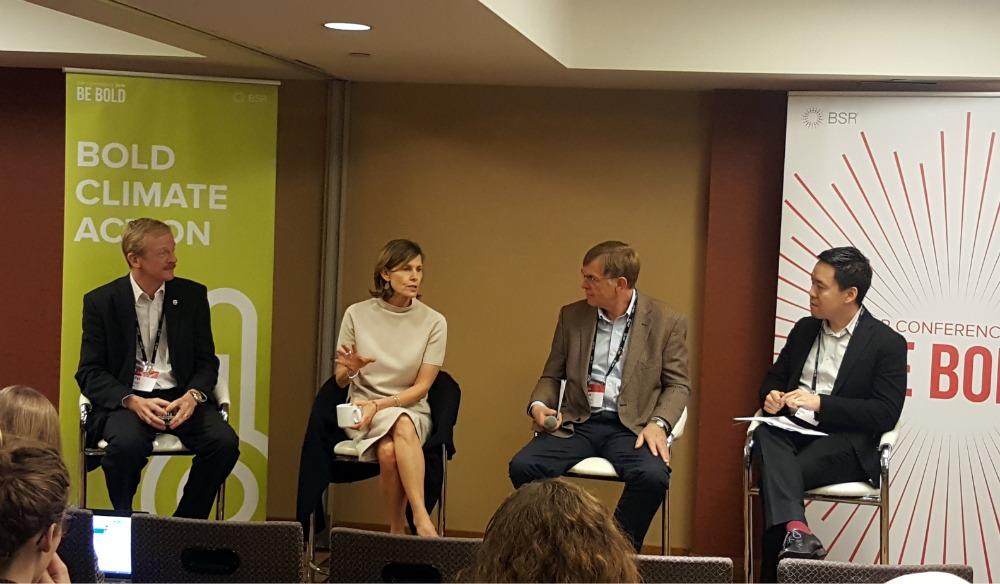

Last week, three business leaders sat on a panel to discuss corporate climate commitments at the 2016 BSR conference. But they kept coming back to a broader topic: the rise of the sustainability professional.
Gone are the days when sustainability executives serve as mere figureheads for uninspired corporate philanthropy. Corporate responsibility leaders are no longer typecast as dreamers or idealists whose values have no place in a business setting. As consumers continue to demand more sustainable products, today's sustainability professionals are often the go-to for driving business growth.
This shift is apparent for all of us in the space. And it may be just what we need to drive corporate commitments that can move the needle on global challenges like climate change and resource scarcity.
Noel Morrin, executive vice president of sustainability for Finnish pulp and paper company Stora Enso Oyj, shared his personal journey as a sustainability professional: "I’ve worked in sustainability for 29 years. And for 27.5 of those, I said please. Now I don’t say please," he said with a laugh. "I sit there with the CFO and the divisional directors and everybody else, and I have equal say."
Some companies are pushing things a step further, Peter Harris, sustainability director for UPS Europe, pointed out. "In terms of integrating sustainability not just with investment but also within business, one of the key things is: Don’t have a sustainability department," said Harris, who serves as the lone sustainability representative for UPS in Europe. "I think when you have a situation where there are an army of sustainability people, then the inevitable result is the creation of a bucket where it is considered that sustainability gets done."
This new era for sustainability professionals surely presents opportunity to drive real change. But Harris cautioned his peers not to get too carried away, lest they be pushed back into the silo from whence they came.
"With this increased attention that I agree our community is getting comes some responsibility," Harris insisted. "Innovation on its own is not enough. It has to be an innovation that works.This measured approach often requires patience. Although calls for greater sustainability among the world's largest companies are growing, this is still a relatively new movement. And acknowledging that companies are in different phases of this journey, rather than expecting them to have the answers right away, will prove crucial in bringing all actors to the table, said Deborah Winshel, global head of impact investing for BlackRock."We have to be able to implement this stuff. We must be mindful of the responsibility to make sure that the ideas we’re generating can be made real. Otherwise the risk is that we go through a fashionable rise in attention span and then we find ourselves in another valley of death."
With over $5 trillion in assets under management, BlackRock is the largest investment management company in the world, publicly-traded or otherwise. But until a year or two ago, a significant proportion of BlackRock's clients barely had sustainability on their radar, let alone undertaking actionable steps to tackle challenges like climate change, Winshel said. Now, you'd be hard-pressed to find an institutional investor in the company's portfolio that isn't asking about these topics.
Picking up on these market trends, BlackRock came together with former New York City Mayor Michael Bloomberg to form the Task Force on Climate-Related Financial Disclosures, for which Winshel serves on the board. The task force, which aims to drive consistent global reporting around climate risk, is still in the very early stages. But the fact that it even exists speaks volumes, Winshel insisted.
"The data is honestly mediocre at best," she conceded. "It’s not great data yet. But I think the fact that BlackRock, representing so many clients, cares about this information -- which means our clients, our investors care about that information -- hopefully creates a virtuous cycle: Companies appreciate that investors care, and so there’s a greater drive to produce reports that don’t just have butterflies and rainbows on them but are really trying to help us understand the challenges they face and the solutions they’re working through -- which we appreciate are not straightforward -- to try to move us all forward in this transitional economy."
Harris agreed that the corporate shift toward sustainability, while clear and visible, is also incremental. For UPS, the clients most likely to ask about sustainable offerings are larger customers operating on the premium end of their markets. But that trend is beginning to trickle down.
"The end result of that is — hopefully, and it aligns with what we’re seeing — a race to the top. Anything that allows me to connect what I’m trying to do to conventional business metrics is a win-win. And i think that’s the way it’s going ... If it becomes a competition between UPS and the other members in the logistics industry to be more sustainable, that would be huge."
Morrin agreed, saying business leaders must stop waiting for consumers to demand sustainable products and start leading their industries now -- or else risk being left behind later.
"It’s about differentiation," he explained. "I don’t expect consumers to pay more. I don’t expect to pay more. What I want is a more sustainable product at a better price. And if you build in the efficiency and you have the right sort of investors behind you, you do it. That’s the reality of where we are."So, what do you think as a sustainability professional? Are higher-ups in your company more likely to listen to you, or do you feel as siloed as ever? Share your thoughts with us in the comments section.
Image courtesy of the author
Carbon Taxes Face Challenges Internationally


By Sheldon Zakreski
As climate change continues unabated, the calls grow for creating a financial incentive to reduce greenhouse gas emissions—namely placing a price on carbon. There are multiple ways to price carbon, with the method predominantly advocated for being a carbon tax. Such an approach bears further examination on whether it can effectively reduce greenhouse gas (GHG) emissions in an economically efficient manner.
A carbon tax works by imposing a cost on producing GHG emissions, an activity that is currently free in many parts of the world. By charging for each metric ton of GHGs produced, the theory is that those who face paying the tax will take actions to reduce their GHG emissions in order to avoid paying the tax. On its surface, carbon taxes appear to be a simple and straightforward approach to mitigating GHG emissions. A closer look, however, reveals that implementing a carbon tax isn’t as simple as it appears, and doesn’t necessarily guarantee a desirable set of environmental or economic outcomes.
According to legislators, the biggest selling point of a carbon tax is the relative administrative ease of charging and collecting tax revenue. However, despite this assertion, the U.S. tax code is full of itemized deductions, exemptions, and a long list of regulatory do’s and don’ts. There is always a litany of issues for legislators to consider when implementing a tax, and it’s hard to imagine that carbon-tax-setting policy would be any less complex. Additionally, ensuring the tax isn’t too regressive to low-income families, or burdensome on trade-exposed industries, would not be simple. At the bare minimum, these hurdles undercut the premise that carbon taxes are straightforward and easy to administer.
Another challenge with a carbon tax is its lack of sensitivity to economic cycles. A carbon tax that doesn’t automatically adjust to economic signals runs the risk of being a large drag on the economy when it is weak, or failing to constrain GHG emissions increases when the economy is strong. Neither instance is desirable, resulting in undue economic or environmental damage.
Although not sensitive to economic cycles, carbon taxes are highly sensitive to political cycles. The Canadian province of British Columbia (B.C.) is a case in point. The province’s Liberal Party, then lead by Gordon Campbell, passed legislation that imposed a $10 per metric ton tax starting in 2008; it rose by $5 per metric ton annually to $30 in 2012.
While emissions fell in the first few years of the tax, the province’s emissions grew by 1.8 million metric tons between 2011 and 2014 — the equivalent of adding 380,000 cars to the road. This rise in emissions demonstrates the mechanism’s lack of sensitivity to economic growth, and also susceptibility to political currents. The tax hasn’t risen since 2012 due to the politically tenuous future of Premier Campbell’s successor, Christy Clark (also of the Liberal Party). Although the Liberals were widely predicted to lose the 2013 election, they narrowly returned to power, resulting in a carbon tax that has not been adjusted for fear of handing opponents political fodder. With elections slated in 2017, it is unlikely Premier Clark will increase the carbon tax as she fights for her political life.
This scenario has lead the environmental group, the Pembina Institute, to recently call B.C. a climate laggard, noting that its emissions are projected to rise through 2030 based on current carbon policies, while those in Alberta, Ontario and Quebec are projected to drop in the same period. Although Alberta has a carbon tax, one wonders if they would be on the pathway to reduce GHG emissions if not for the election of the environmentally progressive New Democratic Party, which doubled its tax upon taking office. It’s not hard to imagine carbon taxes being reduced or scrapped in Alberta and B.C. should the governments change hands in respective elections, particularly as campaigns often tout tax reductions as a means to attract voters.
Carbon taxes have a lot of momentum in domestic and international discussions as the preferred policy for pricing carbon emissions. However, carbon tax policy faces a lot of daunting issues beyond just complicated administration and being subject to political trends. The biggest detriment of employing a carbon tax (and this is a big one) is that it does not guarantee a reduction in emissions. Although cap and trade may seem to be a more complex system, it has the major benefit of establishing a ceiling on emissions that can be directly ratcheted down over time. And isn’t the point of climate policy to reduce GHG emissions that are changing our climate?
Image credit: Flickr/b k
Sheldon Zakreski is the Director of Carbon Compliance for The Climate Trust.
Greenpeace: Samsung's Exploding Phone Presents Opportunity for Leadership


If last year’s biggest corporate scandal was Volkswagen’s emissions cheating fiasco, 2016 will be remembered for Samsung and the exploding Galaxy Note 7. And if Apple’s iPhone sales continue to shine, Tim Cook should write Samsung’s executives a long thank-you note after Christmas. How a company could be so oblivious and allow these phones to go to market without rigorous product testing will long be a subject for investigative journalists and business professors.
Samsung embarked upon an aggressive recall program that promises customers can exchange or refund their Note 7 phones. But Greenpeace insists 4.3 million of those smartphones were sold before Samsung halted their distribution, which poses a huge electronic waste (e-waste) challenge.
As Reuters reported last week, Samsung said it will remain “in full compliance with relevant local environmental regulations” as it sorts out what to do with the recalled phones, which contain valuable metals such as gold, tungsten and palladium.
But Greenpeace is calling on Samsung to be more transparent as to how it will process all of those smartphones.
The problem is that environmental regulations covering e-waste, including used and obsolete cell phones, are lacking in many countries. E-waste is an especially huge challenge in emerging economies, where citizens and the local environment are at risk due to the toxins that can be released as these devices are dissembled. As Greenpeace pointed out several years ago, developing countries are often the dumping ground for old electronic devices, which upon arrival are generally picked apart by hand.
Not that wealthier countries perform much better, as the financial incentives that most cellular service providers offer to recycle old phones are too uninspiring and puny for many consumers. Far too many phones, insist many environmental groups, end up in the trash.
Samsung shouldn't have a problem finding a buyer for the precious metals in its phones. By Greenpeace’s accounting, the 4.3 million Note 7 phones floating around encase 220 pound of gold, as much as 132 pounds of palladium and “several kilos” of tantalum. Those phones also contain “conflict minerals,” the group says, including at least 22 tons of cobalt. This metal that allows batteries to be lightweight in their design, but is connected to a massive human rights and child labor crisis in nations such as the Democratic Republic of Congo. Then, of course, is the question of where all the glass and plastic components will eventually end up.
In Greenpeace’s view, Samsung has not done enough, nor has it disclosed sufficient information on how it plans to manage the recalled phones.
“Rather than just saying disposal will be done in compliance with local regulations, Samsung should use this opportunity to set an example and show innovation by recovering the resources and reusing them,” Jude Lee, a senior campaigner with Greenpeace East Asia, told TriplePundit in an email.
“Samsung needs to find ways to reuse components, harvest and reuse precious metals, and then recycle responsibly. It needs to move towards a closed-loop production system, so mistakes of this scale are prevented. It must start designing phones that are made to last, easily repaired and updatable.”
In order to assure its stakeholders that the company is moving forward sustainably and responsibly, Greenpeace asked Samsung for a more detailed plan on how it will dispose these phones; how it will safely extract valuable materials; and disclose whether these devices will be disassembled and recycled locally or in one centralized location.
Image credit: John Biehler
The Hult Prize: Incubating for Impact
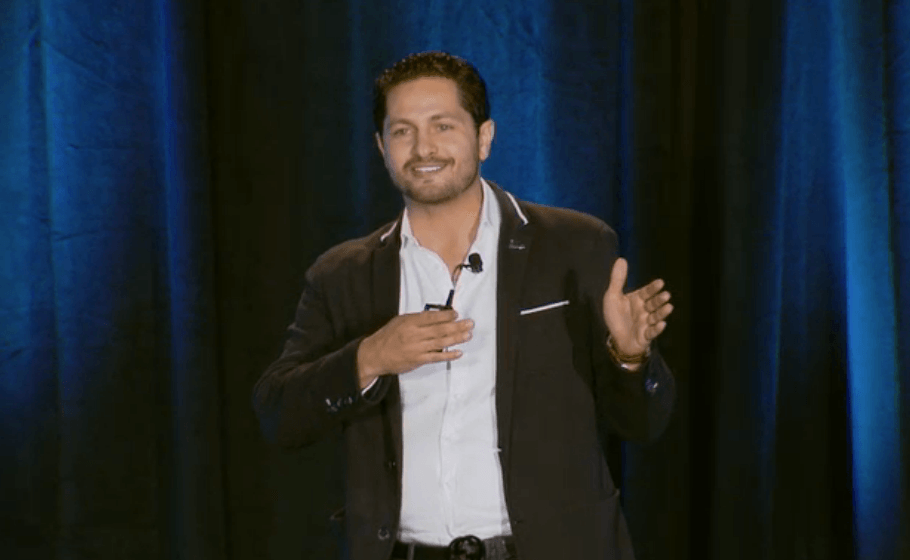

The annual Net Impact conference brings post-graduate students and professionals together to invent new ways businesses can have a positive impact on society. Beyond the conference, the global Net Impact community of over 100,000 students and professionals seeks to drive collaboration around social and environmental change. And if Ahmad Ashkar, founder and CEO of the Hult Prize Foundation, is any indication, this model of inspiring students and creating a network around impact can work.
Seven years ago, Ashkar was a student attendee at Net Impact. He had just founded the Hult Prize, a millennial startup incubator focused on impact-driven companies. Since 2009, the Hult Prize grew from a small pitch competition to a network of established offices around the globe and hundreds of campus chapters in over 130 countries. More than 100,000 people have participated in the Hult Prize since its founding.
The model proved so successful that it attracted the attention of former U.S. President Bill Clinton, and the foundation now partners with the Clinton Foundation on its annual $1 million prize. Dubbed "the Noble Prize for students," the Hult Prize portfolio of startups includes trailblazers in food security, healthcare, education and clean water. To put the success of its participants in perspective, check out the Forbes' 2015 30 under 30. Of the 30 rising stars listed, 14 are Hult Prize alums, Ashkar said at the 2016 Net Impact conference in Philadelphia last week.
This success speaks not only to the validity of the Hult Prize model, Ashkar said, but also to the rise of a new kind of company.
"At the Hult Prize, we believe the companies of the future will be impact-centered, profit-minded and market-driven," Ashkar said on Saturday. "If you create this kind of initiative for a company, you don’t need to worry about output metrics, because your company is designed correctly."
In an age when the majority of consumers say they will seek out a sustainable product when possible, even established companies are beginning to warm to this impact-centered approach, Ashkar explained.
"Corporations are starting to realize that impact and having a positive net effect on the communities you serve yields to higher share price. This is the best outcome we can hope for."
At an event attended predominantly by post-graduate students, it’s no surprise that Ashkar cited millennials as the driving force behind this shift to impact-centered business models.
"The millennial generation is re-shifting the way corporations think about business," Ashkar said. "Why? Eight out of 10 of us seek out brands having positive impact."You understand what that’s doing to the corporation. You’re telling the corporation, ‘If you don’t have impact on the society that you’re serving, you will be extinct in a decade.’ That’s big."
While some in the sustainability set may find the millennial argument a bit tired -- and even millennials are growing weary of the moniker -- the market realities back up the buzzword. Almost 75 percent of millennials say they are willing to pay more for a sustainable product, according to a 2015 Nielsen global online study. These figures are about the same for respondents aged 15 to 20, also known as Generation Z.
If these trends remain steady as younger generations gain buying power, it only makes sense that companies pursuing sustainability and impact will rise to the top, while the laggards are left behind. This is already becoming clear in the markets, Ashkar said, using industry leaders like Patagonia and Ikea as examples.
"The value, the market cap of a company can be credited to how much good work it’s doing -- and doing it sustainably. We can now sniff out companies which are simply allocating top-line revenue to the poor — that’s not good enough. You need to design for impact."
Save for early adopters, this market shift will likely present growing pains for established companies -- and some may not survive. But for social enterprises like those gaining funding and exposure through the Hult Prize, this new economic mindset presents an opportunity to get it on the ground floor.
And Ashkar insisted companies designed with impact in mind are better able to weather the storm: They don't have to worry about a board member reprioritizing short-term gains or a product trend disrupting their core mission. If you have a good idea centered around impact, the young CEO contended, the deck is stacked in your favor.
"As you think of your next big enterprise, your next big idea, you have to design for impact. You have to design your product or service so that, by a mere function of you existing, you have a net impact on society."If you follow the mindset of impact-centered, profit-minded and market-driven, all you need to focus on is one measurement: revenue. Period. Because your companies are designed for impact."